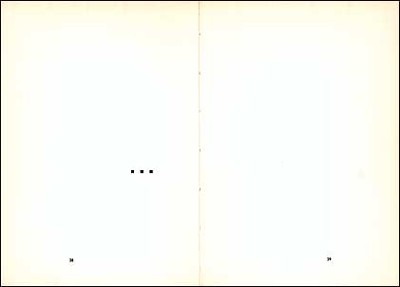Nulpunt

Osmo Jokisen 1964 ilmestynyt käsitetaiteellinen runokirja Nollapiste on ilmestynyt hollanniksi. Tapahtuman kunniaksi Tuli&Savu julkaisee nettisivuillaan aiheesta pätevän ja kätevän tietopaketin. »
Alleviivauksia, päällekirjoitusta ja muuta marginaliaa
Blonde on Blonde
Toisin sanoen
Ihmisiä, päiviä, elämää
Poem in Reverse
Uusia lauseita
Jump Hump

Tilaa kirja
Lataa pdf
Original blog
Shadow Finlandia
Afsnit P
William Allegrezza
Reed Altemus
Stan Apps
As/Is
Anny Ballardini
Tom Beckett
Bentspoon
Charles Bernstein
Harvey Bialy
Mikael Brygger
Lorna Dee Cervantes
Christopher Church
Clayton Couch
Rita Dahl
Diogenes
Exquisite Poetry
Elävien kirja
Tri Frankenstein
Kate Greenstreet
Pauliina Haasjoki
Hannu Helin
Crag Hill
Geof Huth
Ville Hytönen
Jussi Hyvärinen
Lassi Hyvärinen
Timo Hännikäinen
Kirsten Kaschock
Jukka Kemppinen
Anita Konkka
Sirpa Kyyrönen
Käymälä
Mark Lamoreaux
Jim Leftwich
Leevi Lehto
Leevi Lehto:
The Finnish Ulysses
V. S. Luoma-aho
Teemu Manninen:
Kesken kaiken
Teemu Manninen:
Cacoethes Scribendi
Tommi Melender
Lassi Miinalainen
Chris Murray
Miikka Mutanen
Kati Neuvonen
Marko Niemi
Risto Niemi-Pynttäri
Juri Nummelin
Outi-Illuusia Parviainen
Merja Peuhu
Rachel Phillips
Nick Piombino
Vincent Ponka
Ernesto Priego
PR Primeau
Lanny Quarles
Rahinaa
Saying Something
K. Silem Mohammad
Ron Silliman
Elina Siltanen
J. P. Sipilä
Tomi Sonster
Harry K Stammer
Gary Sullivan
SusuPetal
Ville-Juhani Sutinen
Eileen Tabios
Henriikka Tavi
Toisia runoja
Miia Toivio
Jarkko Tontti
Jouni Tossavainen
Ululations
Sami Vainikka
Jean Vengua
Viiveellä
Juhana Vähänen
Dan Waber
Ted Warnell
Mark Young
nonlinear poetry
Aika ja minä
Asemic
merisusi puolaksi
textual conjectures
self-similar writing
terminate and stay resident
mailXart
minimum daily requirements
copyXart
collaborative processes
collageworksFinnish Blogs
Blogilista
Blogisanomat
The Butt Ugly Weblog
-C-
Dionysoksen kevät
Dyro
Eufemia
Hetket
Hilla
Hurina
Ikkunaiines
Kasa
Klasari
Kolmas huone
Lady Lupinesque
Tuomo Manninen
Marian studio
Hannu Marttila
Minh
Mitvit
Mustikassa
My typo
NONO
Pagistaan
Puoli grammaa
Teemu Rinne
Rauno Räsänen
Saara
SchizoBlog
Sedis Blog
Laura Sippola
Sivuaskel
Sivupersoona
Skrubu
Theokratie
Timbuktu
Tristan
Ulos itsestäänselvyyksistä
Jari Vaarma
Veloena
Jan Kenneth Weckman
Arto Virtanen
Vuh Vuh
Links
Baabelin runouskirjasto
John M. Bennett
Electric Verses
Electronic Poetry Center
eratio
Get a Google Poem
Jacket
Nihil Interit
Lumoavaa liikettä
Nokturno.org
Otoliths
Alex Ross
Tuli&Savu
Ubu Web
xPress(ed)
xStream
Powered by Castpost

Archives
3 Comments:
Karri,
Help me with this one. It looks like it is meant to be a severely minimalist punctuation poem (from 1964?), but what are the two characters on the bottom? I can't quite make them out.
Geof
Geof,
You're right, the picture shows two pages from a minimalistic slash conceptual work by a Finnish journalist, Osmo Jokinen. The book was called Zero Point and it came out in 1964 with a subtitle that referred to the piece as "Poems."
I've never actually seen the book, but they say it consists of 64 empty pages -- or so it seems. A closer look will reveal a few things. First, there are the page numbers at the bottom center of each page (the ones that you noted, but couldn't quite make out from the picture). Second, there's a table of contents at the end, which tells us that the book is made up of thirty poems, divided into nine sections. And finally, there are the ominous points, or tiny rectangular dots, that appear here and there throughout the book. There are 31 of them, in all, the first one appearing on page 15. Sometimes there's only one dot, sometimes two or three, but never more than four on any single page (you can see three of them on the left page, here). Naturally, there are a lot pages where the dots are missing altogether. The appearance of the dots (and lack of them) is also indicated in the TOC. So, the book has a structure like any other book of poems.
The book was greeted with the usual outrage. From this on, anybody could claim himself a writer, they said. Some thought, erroneously, that Jokinen was making fun of the concrete poetry/minimalistic art of the day. He said he was not; in fact, although he was not a poet/artist himself (Nollapiste was a one-time shot), he knew a lot of them personally and even discussed artistic issues with them, citing Roland Barthes' Le Degre Zero de L'Écriture as one source of inspiration.
Art philosophy aside, you could say Jokinen's act was also an act of vanity. Although Nollapiste didn't earn the author the status of a real writer, it got his name in the Writers Register anyway, a public record that dutifully lists everybody with a printed work with the minimum of -- you guessed right -- 64 pages.
The reason to bring the book up now, forty years after it was first published, is that it has been just "translated" into Dutch. Now, how many writers can boast with that -- Finnish, American, or otherwise? If you're interested, just follow the link at the end of my story for more information about the Dutch edition.
Karri,
Thanks for the explanation! I'll have to learn more about this for my planned anthology of punctuation poems. And the story of this would be great for the introduction to the book.
Maybe my Finnish is improving: I translate "suomalaisen avantgarderunon klassikko" as "classic Finnish avant-garde." (I used to collect stamps, so I recognize the "Suomi" in "suomalaisen"--but maybe the "laisen" means something else.)
Geof
Lähetä kommentti
<< Home